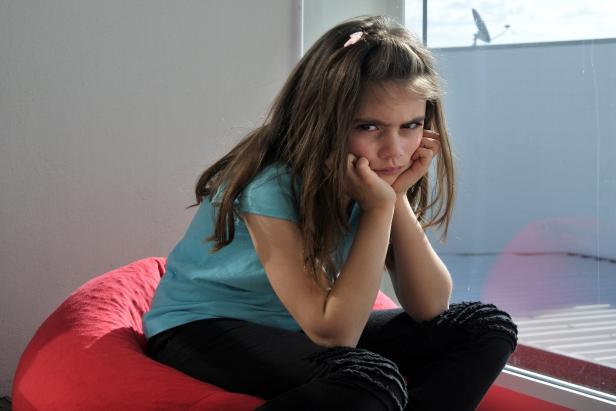Why Time-Out Doesn’t Work. Here’s What to Do Instead
One mom's take on the age-old "time out".


Rafael Ben-Ari
On the surface, time-outs seem like a good way to parent your child. They’re non-violent, get your child’s attention and give both the parent and the child a break when emotions are running high.
The problem with time-outs is that they make your child feel angry, which, in the long run, makes your child less likely to cooperate with you. It also creates a distance in the parent-child relationship.
What Happens to Your Child When They’re Put in Time-Out?
Your child is left on his or her own to deal with their emotions. Children, especially young children, are not able to regulate their emotions, so they suppress their emotions in time-out. You may think they are learning a lesson, but they are just complying out of fear.
The problem with this is that your child is not learning what is appropriate behavior and why, which is why many parents find themselves putting children in a time-out over the same behavior over and over again.
It makes your child feel like a bad person. When your child has an outburst, that’s a form of communication. Your child is dealing with something they cannot control because they are children and not developmentally at the same level as an adult.
When you send your child to a time-out, it makes them feel like a bad person, which perpetuates "bad" behavior. You are basically confirming to your child that they are bad. This lowers their self-esteem and also their capacity to believe that they can be a “good” child, which directly affects their behavior.
Your child doesn’t learn how to regulate their emotions. When you send your child to a time-out, they might calm down but not because they learned how to regulate those big emotions. This could make the next outbursts even worse. It also fuels power struggles and may turn your child against you, which might lead to your child not wanting to cooperate with you or behave better.
So, How Can You Manage Your Child’s Behavior Without Time-Outs?
Every behavior is a form of communication. Whether your child can express it or not, they are struggling and trying to communicate something. It is our job as parents to understand what that “something” is, and be the calming presence in our child’s life. Children learn more from what they see than what we say, so the best thing you can do for your child is to model the behavior you want them to display.
Before you can discipline or correct, your child needs to feel connected with you. Think about it from your perspective. When your boss yells at you, do you do the work happily and willingly, or does it make you upset?
The first thing you should do when your child is acting out is to connect with them. Kneel down to their eye level and acknowledge their emotions while looking at them in the eyes.
Set firm boundaries but in a calm way, and with empathy. After you acknowledged how they feel–this might require several minutes–you can start talking to your child about what happened. At this point you are trying to get your child to calm down because if they’re upset, they cannot listen.
If your child is old enough, give them the chance to come up with a solution to the problem or offer 2 solutions for them to choose from.
For example: “I see you’re very angry because you want to keep playing. I understand why this makes you mad, I would want to keep playing too.” Give some space for your child to communicate their feelings while you keep acknowledging how they feel. Once they are done expressing their emotions, you can add: “I understand that this makes you upset, but we have to go now.” You are setting a firm boundary and then you offer a solution. In this scenario you could say: “I can see how much you’re enjoying this, how about we play this game later?” Or give them 2 options: “Would you like to have one last turn now or play more when we get back home?”
You don’t need to punish your child for them to understand their behavior is bad. If you pay close attention, your child already knows they did something bad so the best thing we can do for them is to teach them how to regulate their emotions and the appropriate behavior to display for the next time something like this happens. We accomplish this by staying calm and peacefully communicating with your child.
If you’ve never approached discipline this way, it’s going to take a few tries before both you and your child get the hang of it. But don’t give up! The results are long-lasting and much more effective than parenting with fear.















